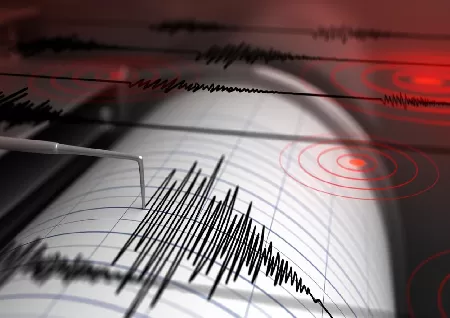Earthquake of magnitude 4.3 hits Afghanistan

Afghanistan earthquake: Due to the country's prolonged cold snap, many who were affected by earthquakes in the Paktika area of Afghanistan have already been living in agony. At at 9:07 on Saturday morning, Afghanistan experienced an earthquake with a magnitude of 4.3. According to the National Center for Seismology, the earthquake was 186 kilometres deep (NCS). Afghanistan was the location of the 4.3-magnitude earthquake, which occurred on April 2, 2023, at 09:07:23 IST, in latitude 36.64 and longitude 71.46. NCS tweeted the information. Because they are compelled to live in caves, those who were affected by earthquakes in Afghanistan's Paktika region have already been suffering, and their troubles have just gotten worse because of the country's current cold snap, according to the past, earthquakes Many of these folks who were surviving the cold in the Paktia province were previously murdered by earthquakes; now the cold is harming them. Right now, the cold is causing issues for many families. Over 7,800 dwellings, including 6,000 in the Gayan district, were entirely destroyed by the earthquake that devastated Paktika and Khost provinces last summer, according to government figures.Notably, a 4.0-magnitude earthquake occurred this morning near Ukhrul, Manipur. According to the NCS, the earthquake happened on Saturday at 6:14 a.m. Meanwhile, on Friday, Shamli in Uttar Pradesh was struck by an earthquake with a value of 3.2 on the Richter scale. Afghanistan is a very active region of the Earth's crust because it is the meeting point of the Arabian, Indian, and Eurasian tectonic plates. Near Afghanistan's border with Pakistan is where the Indian and Eurasian plates meet. Recent earthquakes were caused by the strong collision of the Indian and Eurasian plates. Similar collisions cause the ground to tremble and bulge upward.This action produces mountains like the Himalayas and the Hindu Kush and Pamir mountain ranges in northeast Afghanistan in addition to earthquakes. Due to its location in the Alpine Belt's hilly Hindu Kush area, Afghanistan is prone to earthquakes. The Pacific Ring of Fire is the most seismically active region in the globe, followed by this belt. About 15,000 kilometres from southern Eurasia across the Himalayas and into the Atlantic Ocean is where the Alpide Belt begins. It contains a variety of mountain ranges, such as the Alps, Atlas Mountains, and Caucasus Mountains, in addition to the Hindu Kush.
Related queries to this article
- Earthquake magnitude 4.3
- Afghanistan
- National Center for Seismology
- Arabian
- Northeast Afghanistan Earth quakes
Read more articles and stories on InstaSity Latest News.





